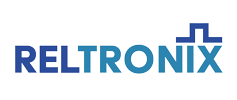Anti Counterfeit
Obsolescence and supply constraints continuously impact the semiconductor market. This creates a steady demand for procurement of aftermarket semiconductor components. Unfortunately, this demand also in parallel generates activity in production of counterfeit components attempting to capitalise on that market.
Counterfeit components are not simple to define and can present as recycled, re-coded, overproduced, out-of-spec/defective, cloned, supplied with forged documentation, tampered.. the list goes on. But in summary whatever the definition, these components do not have the warranty, guarantee and inherent reliability of a new batch of certified components from the original manufacturer.
If you take time to peruse the internet you will find many varied references and approaches to an anti-counterfeit solution that seek to address some of the concerns mentioned above.
In general an approach to screening aftermarket components use is broken into three categories:
Authentication
Visual inspection – External visual such as marking
Mechanical – Utilising imaging tecniques such as X-ray, SEM, EDS, SAM, XRF, and physical de-capping to verify the die inside a component, plus external checks of leads, metal tinning etc
Basic continuity testing
Datasheet based electrical screening
Functional Testing – Typically DC testing
Complete Functional & Dynamic Testing
Datasheet based life screening
Burn-in of components against datasheet conditions in order to identify and eliminate mortality
Sample sizes on all the above vary depending on the perceived lot homogeneity and risk level.
What should I consider for my application?
Ultimately the goal of an anti-counterfeit screening flow is to reduce commercial risk to an acceptable level. This acceptable risk level will vary depending on the starting provenance of material, the application, the industry sector and the customer need.
At Reltronix we focus on applications that have a high-risk level and where high fault coverage must be identified beyond confirmation of a devices authenticity. This is because for fault intolerant applications verifying device authenticity is not the same guarantee as fresh fully warranted components coming from the manufacturer. For example whilst a device passing authentication may present a lower entry risk level but no clear identification of components with prior electrical stress, environmental exposure, incorrect esd handling, storage or other physical mishandling. This means that despite authentication a devices pedigree and useful life over time and temperature remains unknown.
The objective of datasheet electrical screening is to reduce the risk significantly by determining the quality of each product. This is accomplished by running a suite of tests preferable identical or as close as possible to the original manufacturer’s datasheet.
Tests are broken out into DC, static functional tests and AC, dynamic functional tests. Both of these may be performed over datasheet temperature range as required.
Full burn-in of components over a given period can also be undertaken with delta analysis pre and post burn-in.
The sampling plans for all of the above depend greatly on customer factors such as risk level, commercial budget and confidence level already achieved via the sourcing and authentication process.
What do we offer?
Our core expertise is datasheet based screening where all testing is done in-house
Where a customer requires we can integrate the authentication step with datasheet testing for a comprehensive solution.
The authentication aspect of the flow is outsourced using trusted and industry-recognized partners.
Find more about our testing capabilities.
An alternative solution in particular for obsolete component supply is to use fresh original warranted manufacturers die and have these die assembled into new packages. We do this process working with our sister company Die Devices who have significant expertise, via this approach risks can be reduced to a very low level.
Sales & Support
Environmental Testing
We offer a selection of in-house environmental tests, such as centrifuge acceleration, life burn-in, stabilization bake and thermal shock temperature cycling.
Mechanical Testing
We offer a comprehensive selection of mechanical tests, from ball shear, die shear, wire bond pull to SEM inspection.
